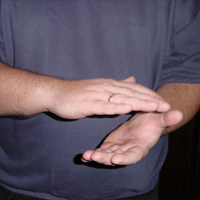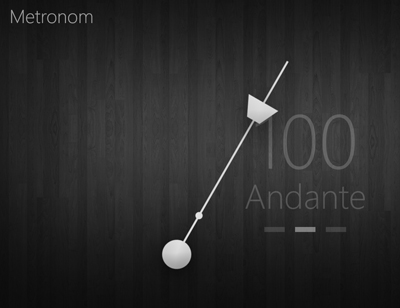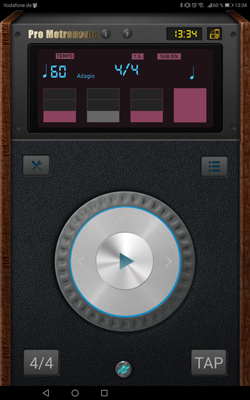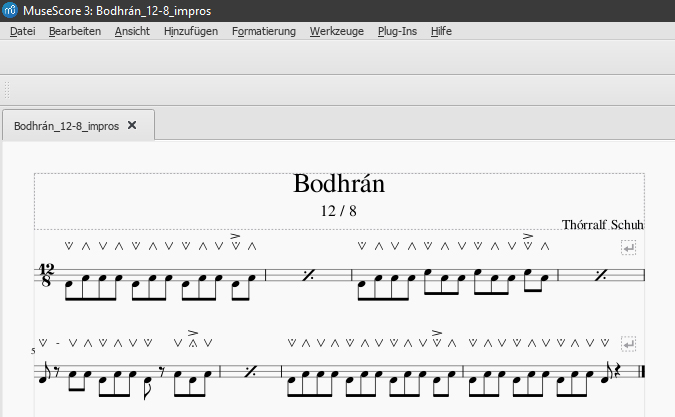Methods of Learning - How to understand rhythms?
Contents
Everybody has rhythm in his or her blood. Since we left the status of cell aggregates our heart is beating. Later on the lungs are breathing and we follow the rhythm of inhale and exhale. We learn to walk which is nothing else like controlled tumbling in a rhythmic order. We don't even think about that and can do it masterly.
Even the complex doing of reading and writing is automated the more you do it daily.
Same is with learning an instrument. Repeating and the self conception are the path to good play. Unfortunately you will have to go the long route of practicing, but if you develop joy and do not have too much pressure it will be great fun.
We use these concepts of walking, clapping and vocalising to understand rhythms.
Clapping (Tala)


TA KA
Rhythmus of 2 beats.
If you want to clap the first speed you speak only one syllable for each clap (quater): TA und dann KA.
2. speed (quaver) means 2 Rhythm-syllables per Clap "TAKA", 3. speed (16th notes) means 4 Rhythm-syllables: "TAKA TAKA" .
TA KI TA
3 Beats are more tricky:
1. speed: Every clap and the open gesture equals one syllable: TAKITA
2. Clap and speak TA, while move over to next clap you say KI, second clap KA, moving to open gesture TA, open gesture KI, move over to first clap KA....
Syllables for Counting
1 = TA
2 = TA KA
3 = TA KI TA
4 = TA KA DI MI oder TA KE TI NA
5 = TA KA TA KI TA oder TA KI TA TA KA
6 = TA KI TA TA KI TA
7 = TA KA DI MI TA KI TA oder TA KI TA TA KA DI MI
8 = TA KA DI MI TA KA JU NO
phonetic rhythm syllables
(Seite 30, BodhránReader)
For a better understanding of patterns we work with rhythm syllables that sound a little bit like the drumming.
Dhum ie. is a base sound, Tak light or high beat, Clack a rim shot etc...
More details in the book...
Tools and Software

Asparion Metronome
Easy to use metronome. you can adjust the sound.

Pro Metronome
One of the best metronomes as app for Android and iOS. Beside changing beats and tempo, this tool knows subdivisions and polyrhythms in the paid version. You can use the TAP area to train holding the beat or just use it to set the tempo.

MuseScore 3
Notation programme with powerful commands and easy access. Very charming is the function to play sound. I wrote an own pallet of symbols for bodhrán.
On this page you find MuseScore files, but PDF as well.

Amazing Slow Downer
program to slow a tune down without changing the pitch. Good sound quality. Very good while practicing.
The mobile version differs very much from the version of windows.
Notation
We will use a notation that is strogly related to those of other percussion instruments. It is based on Behnam Samani's notation for Daf and Tombak. (Page 14, BodhránFibel)
There is another way of writing on the internet which is used by a strong majority of bodhranii.
Instruction: d = down | D = accent down | u = up | U = accent up | % = repeat bar
Sample: ||: Dud Dud du | % | % | dd uu du du :||
Crotchets will be written with - dargestellt, so that a quaver has been extended by the length of itself., Semiquavers are witten in brackets.
Beispiel: ||: D-du D-du | % | % | dd uu (dudu) du :||
This writing is very good for texting and simply shows the "tipping" and not the "melody".

